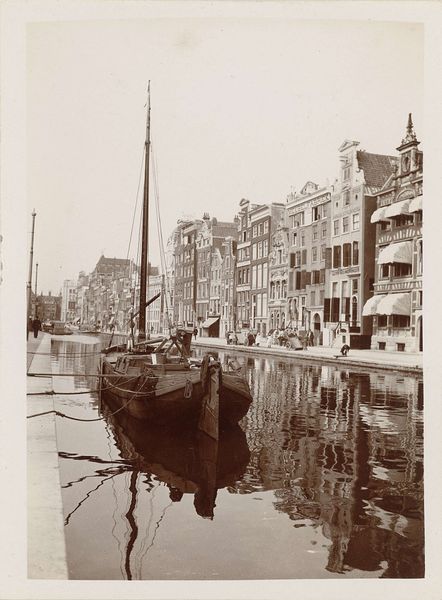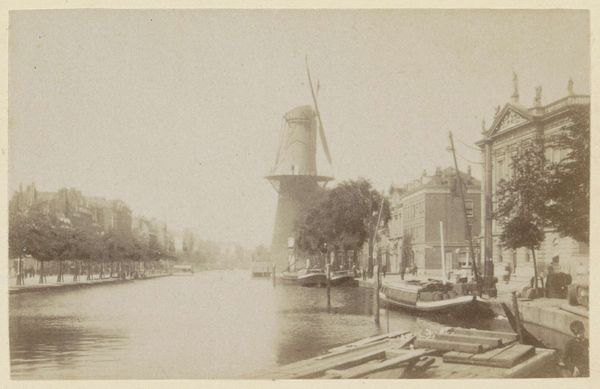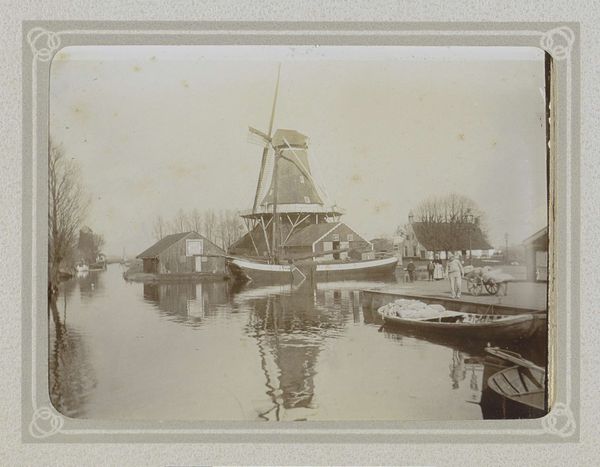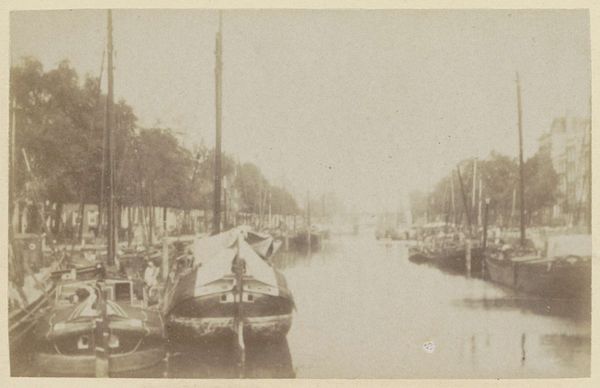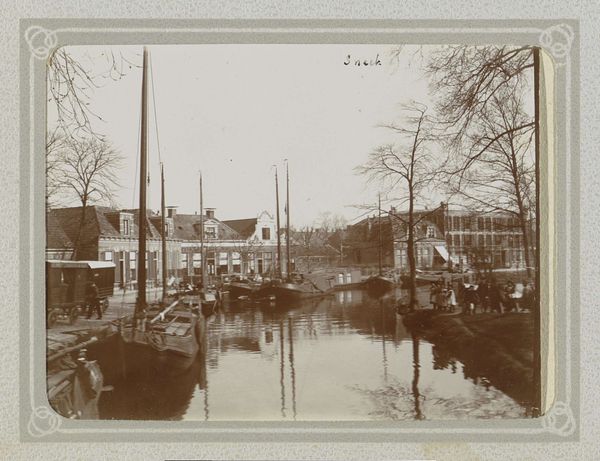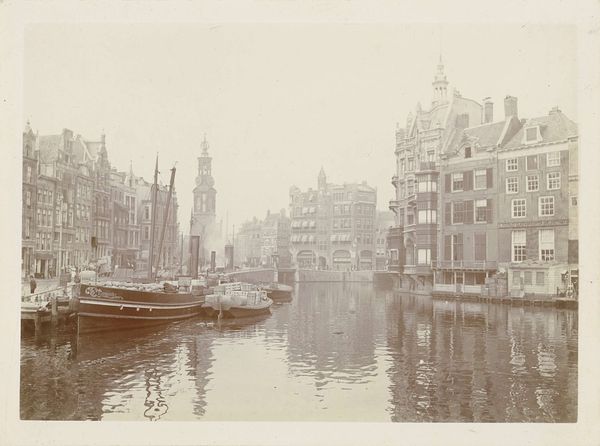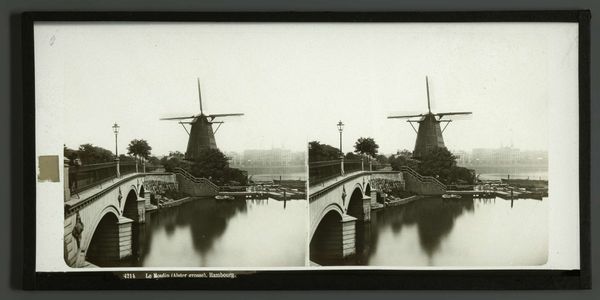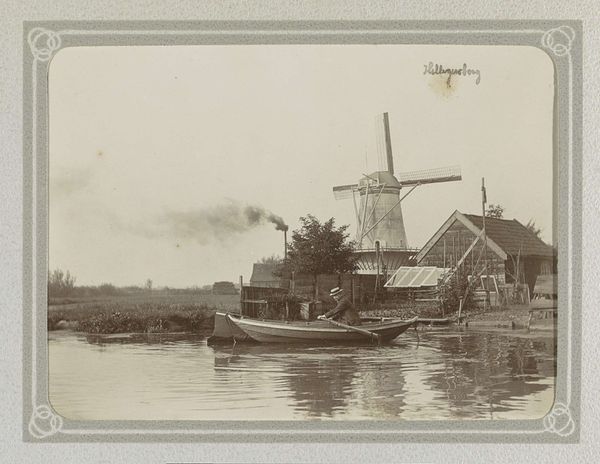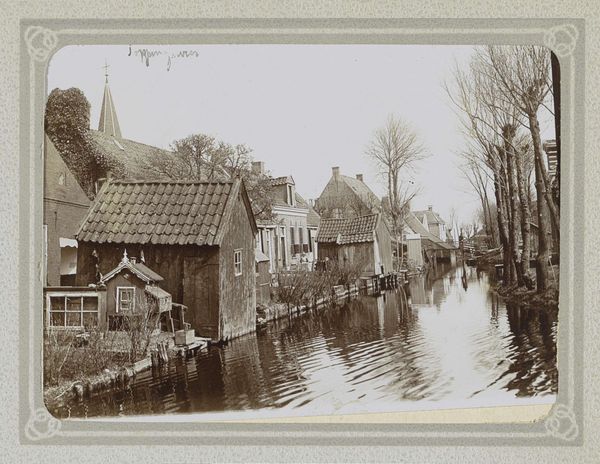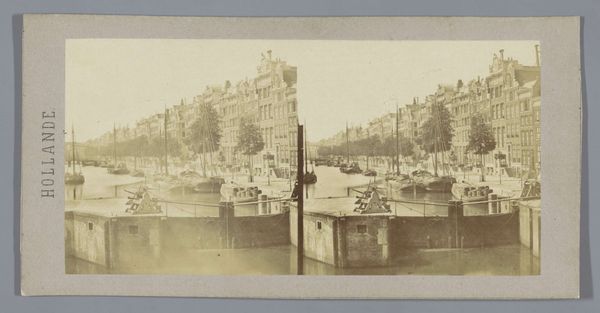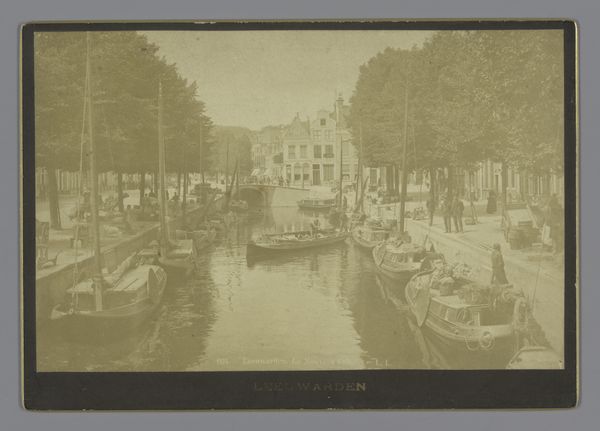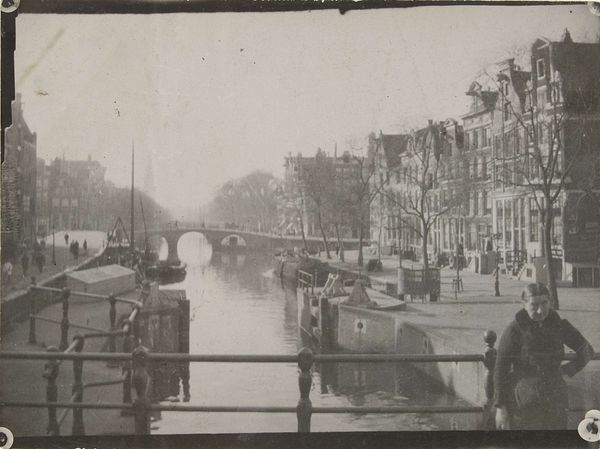
Korenmolen De Hoop aan de Coolvest in Rotterdam, met reclameopschriften c. 1905 - 1907
0:00
0:00
print, photography, architecture
#
excavation photography
#
dutch-golden-age
# print
#
landscape
#
archive photography
#
historic architecture
#
photography
#
historical photography
#
19th century
#
cityscape
#
architecture
#
statue
Dimensions: height 81 mm, width 110 mm
Copyright: Rijks Museum: Open Domain
Curator: This evocative print, captured circa 1905-1907, depicts the Korenmolen De Hoop windmill on the Coolvest in Rotterdam by Folkert Idzes de Jong. Editor: There’s a palpable sense of stillness in this photograph, wouldn't you say? A hushed quality despite the city’s presence. And the reflections in the water are beautifully rendered; they soften the scene even further. Curator: Indeed. Look closely, and you’ll notice the layers of history and commerce intertwined. The windmill, once a symbol of industry and self-sufficiency, stands alongside buildings that speak to Rotterdam’s burgeoning urban landscape. Even more telling is the presence of advertisements adorning the mill, highlighting the shift from agrarian to consumer culture. Editor: Precisely. And what materials were used for its construction? Those could be key. Is it brick? The texture almost implies labor, maybe an overlooked labor force, implicit to the rise of the industrial sector, powering these city centers. Curator: I think that’s an insightful reading of the imagery at work here, that focuses less on capital and profit. Thinking about Rotterdam's identity in the early 20th century and this mill within that identity can allow us to discuss what was preserved and what has been lost to progress. You see these echoes and begin to wonder where those histories and labors exist now, in our present. Editor: To understand that progression, you need to analyze labor practices, its material legacy within photography as a developing art form in order to build something like collective memory of this mill—even when all that we have left are photographs such as this one, the trace of what existed persists within. Curator: It’s more than just a picturesque view. It encapsulates that transition from the rural to the urban, the local to the global, offering a visual commentary on progress and its effects. And while photography continues to rapidly change in the present day, that progress continues, even if what's depicted in the artwork cannot. Editor: Right, progress for some, with materials left behind, forgotten maybe. Still, in considering its production we understand what this mill made, and, thinking more conceptually, what its making of and ultimate dismantling signified for Rotterdam itself.
Comments
No comments
Be the first to comment and join the conversation on the ultimate creative platform.
